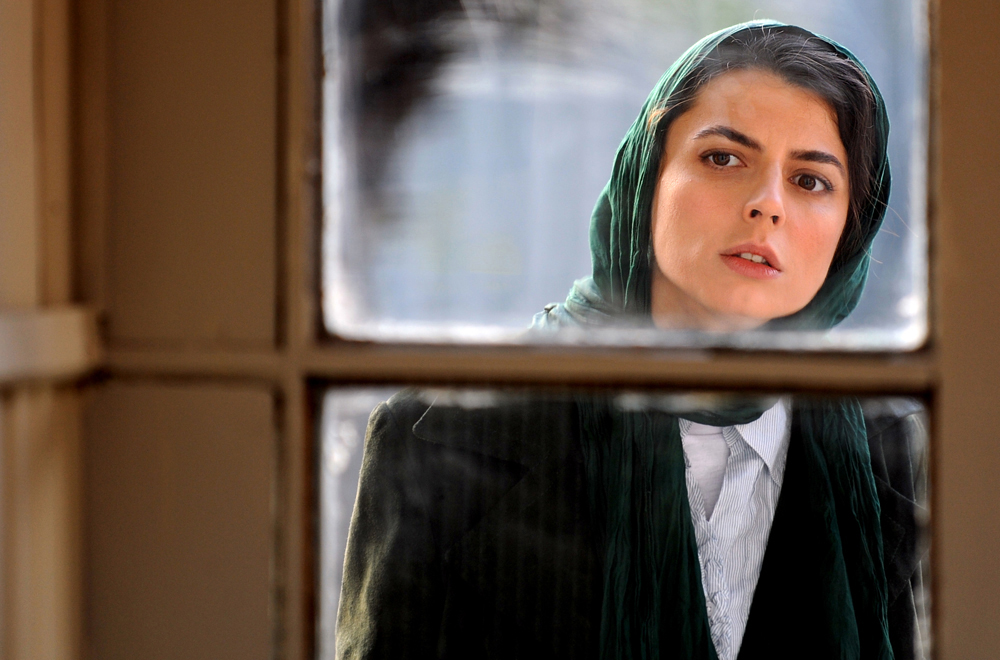Film and Television Archive holds annual Celebration of Iranian Cinema

The UCLA Film and Television Archive will host its annual Celebration of Iranian Cinema beginning Saturday and running until May 16 at the Hammer Museum’s Billy Wilder Theater. Safi Yazdanian’s 2014 film “What’s the Time in Your World?” will screen on May 6.
(Courtesy of UCLA Film and Television Archive)
By Eileen Li
April 24, 2015 4:22 a.m.
Near Eastern languages and cultures lecturer Latifeh Hagigi uses the UCLA Film and Television Archive’s annual Celebration of Iranian Cinema as a way to connect with her home country, which, for political reasons, she has not returned to since 1978.
“It has always been very attractive to me to go and be involved in (the film series),” Hagigi said. “Somehow, it takes me back home.”
The Celebration of Iranian Cinema, curated by the Film and Television Archive and sponsored by the Farhang Foundation, will start Saturday and run through May 16 at the Hammer Museum’s Billy Wilder Theater. Created in the ’90s, the annual film series will feature 11 feature-length films by Iranian directors. It will also host several guest filmmakers including Rakhshan Banietemad, Shahram Mokri and Sepideh Farsi.
“Most of these films, since they’re focused on contemporary Iran, reflect their artist’s take on where Iran is and where it may be going,” said series programmer Paul Malcolm.
Malcolm said the Film and Television Archive tries to obtain films in their original formats, including rare film prints. This year, every film except for the closing night’s 1974 classic, “Still Life,” was shot digitally. For “Still Life,” the Archive obtained what, Malcolm said, may be the only print of the film in circulation.
“It’s a very beautiful film,” Malcolm said. “I’m looking forward to seeing it on the big screen for the first time, myself.”
Malcolm said that most of the filmmakers featured in the series are first- or second-time filmmakers, working in a range of genres. One film, “Red Carpet,” is a pseudo-documentary comedy created by prominent Iranian comedian Farshe Ghermez. Mokri’s “Fish and Cat” is a horror film featuring cannibals and shot entirely in one take. Farsi’s “Red Rose” is a romance set during the Green Revolution, a series of protests that took place after Mahmoud Ahmadinejad’s 2009 reelection as president.
Mark Amin, the Farhang Foundation Short Film Festival committee chair, said the film series focuses on Iranian art-house cinema rather than commercially oriented films like those created in Hollywood.
“These are more sophisticiated films that you’d be more likely to see in a sophisticated neighborhood, such as among college students,” Amin said.
Amin also said Iranian films differ from those of other countries because filmmakers are forced to be more creative and subtle in communicating their ideas, due to the restrictive nature of the government.
Hagigi said when she requests that her students attend the film series as a part of her courses, they typically express hesitation, stating that they find Iranian films difficult to watch because of their heavy subject matter. While Hagigi agrees that some Iranian films depict unfortunate situations, she also said that it is important that her students learn about the reality of life in Iran.
“When students watch these films, they can really appreciate what they have,” Hagigi said.
In Iran, Hagigi said she would not have been able to see many of the guest filmmakers who come to the annual Celebration of Iranian Cinema. Like her, many Iranian filmmakers in the series cannot return to their home countries due to political reasons.
The Iranian government’s restrictions also make it difficult to obtain a visa to the country, though this has become easier in recent years, Hagigi said.
“To students, for whom it is difficult to obtain a visa, films are a good way to listen to the language, learn cultural aspects and enhance their classes,” Hagigi said.
Hagigi said that her students tend to become interested in the series after watching one film. They typically return to see others and even begin to appreciate more abstract films after discussion.
Hagigi said that because Iranian films have a realistic style, often using nonprofessional actors, they are a good way to supplement class readings with visuals that depict the lives of all social classes.
One of the films, Kamran Heidari’s “My Name is Negahdar Jamali and I Make Westerns,” is a documentary about an Iranian citizen who is a fan of American westerns and shoots amateur westerns with actors modeled after famous American actors such as John Wayne. Malcolm said this film challenges the American views toward Iran, as cultivated by news reports and media.
“If you have a particular idea of Iranian culture (as a monolithic culture) in your head, this film will turn all of that on its head,” Malcolm said.


